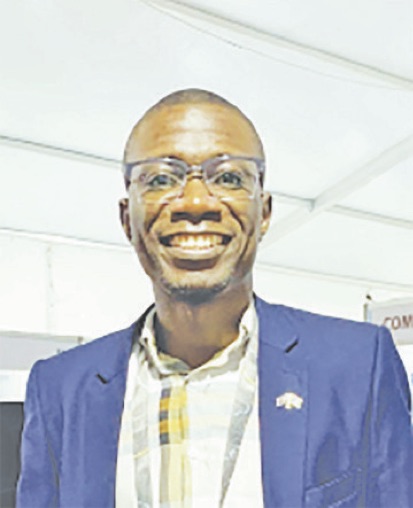By Oluibukun Gbenga Ajayi
The advent of artificial intelligence (AI) as a disruptive technology is perhaps one of the most profound transformations in human history. It is fundamentally reshaping and redefining how work, knowledge, and economic progress are conceived on a global scale. Unlike previous technological revolutions that primarily altered physical labour or industrial processes, AI is a unique disruptive force that simultaneously augments human cognitive capabilities while challenging traditional notions of human intellectual advantage. This transformation is unfolding with unprecedented velocity and scope. AI adoption is reported to have accelerated at an extraordinary rate, with global users surging from 116 million in 2020 to 314 million by 2024 and projected to reach 378 million in 2025.
The economic implications of this AI revolution are staggering in their magnitude. Research indicates that AI could contribute up to $15.7 trillion to the global economy by 2030, which represents a staggering 14 per cent increase in global GDP; an impact close to or probably larger than the current combined output of China and India. This economic transformation goes beyond mere productivity gains. It represents a fundamental restructuring of value creation across industries, with about 78 per cent of companies reported to be using AI in at least one of their operations or business functions. The technology is not merely an incremental improvement but a general-purpose technology comparable to electricity or the steam engine in its transformative potential, yet distinguished by its unprecedented speed of adoption and its ability to simultaneously affect multiple sectors of the economy.
What sets AI revolution apart from previous technological disruptions is its simultaneous global reach and differential impact. While the technology promises to democratise access to advanced capabilities, it also threatens to exacerbate global inequalities, as countries with advanced technology infrastructures and resources tend to benefit more disproportionately. This creates an “AI divide” that could reshape geopolitical power structures, with projections showing that China and North America will capture nearly 70 per cent of the global economic benefits, while the developing regions may experience more modest gains. The transformation is not only technological but deeply social and political, as displaced workers increasingly align with populist movements in response to economic uncertainty, which highlights the urgent need for inclusive strategies to ensure that the benefits of AI are broadly shared rather than concentrated among a technological elite.
Africa’s story is depicted by a compelling narrative of transformation from the periphery to potential centrality. While the continent initially found itself relegated to the role of passive consumer in the technological landscape largely dominated by Silicon Valley and China, a fundamental shift is now underway that positions Africa not merely as a participant but as a potential architect of AI’s future.
Sub-Saharan Africa is at a particularly critical juncture in this transformation. Unlike other regions constrained by legacy infrastructure and ageing populations, sub-Saharan Africa possesses unique structural advantages that could enable it to leapfrog traditional development pathways. The region’s massive youth demographic, with over 70 per cent of the population under 30 years of age, represents an unprecedented human capital resource in a technology-driven economy where digital natives will define the future of innovation. This demographic dividend is particularly pronounced when considering that Africa will account for one in four people globally by 2050, thus creating the world’s largest pool of young and potentially AI-literate talent.
Africa’s role in the global AI ecosystem is rapidly evolving from data supplier to innovation hub. The continent has historically served as a source of training data for global AI models while reaping minimal value from this contribution. However, emerging initiatives like Cassava Technologies’ establishment of Africa’s first AI factories across South Africa, Egypt, Kenya, Morocco, and Nigeria signal a fundamental shift toward technological sovereignty. These developments, coupled with the African Union’s Continental AI Strategy and the launch of a $60 billion Africa AI Fund, demonstrate coordinated continental action to claim ownership over AI development.
The continent’s unique challenges are becoming its competitive advantages in AI development. Africa’s experience with resource constraints has stimulated innovation in low-infrastructure environments to create solutions that could prove globally scalable. Companies like Simba AI in Kenya are developing chatbots that understand local languages and dialects, while Nigerian firms are building AI models that run efficiently on CPUs rather than expensive GPUs. These innovations address the critical gap where global AI systems, trained predominantly on Western datasets, fail to serve African contexts effectively.
To position itself as a global AI leader, Africa must execute a multi-pronged strategy focused on four critical pillars. First, a massive investment in digital infrastructure and energy systems is essential. It is deeply worrisome and concerning to note that only about five per cent of Africa’s AI talent currently has access to adequate computational power. This must change as a matter of urgency. Second, aggressive talent development through initiatives like the 3 Million Technical Talent programme and AI-focused education reforms must scale across the continent to build the human capital necessary for AI leadership. Third, data sovereignty and localised AI model development are crucial to ensuring African solutions serve African needs while creating economic value locally. Finally, strategic continental coordination through frameworks like the African AI Council will enable collective bargaining power in global AI governance discussions.
The stakes could not be higher in this “dash-marathon race” of AI development. While global AI investment reached $184 billion in 2025, Africa is reported to have captured less than one per cent of this funding despite representing 17 per cent of the world’s population. This disparity threatens to entrench Africa as a permanent consumer rather than a creator of AI technologies. However, with coordinated action on infrastructure, talent development, and policy frameworks, Africa possesses the demographic and innovative capacity to become a major force in defining humanity’s AI-powered future. The continent’s moment of transformation has arrived. The question now is whether African leaders will seize this unprecedented opportunity for technological leapfrogging and global positioning.
The post The global dawn of AI as a disruptive force appeared first on The Sun Nigeria.





